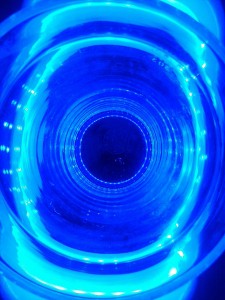Light emitting glass from Down Under
Researchers at the University of Adelaide have developed light-emitting glass. The panes of glass can be used to make highly transparent displays. Because the glass does not lose any of its natural characteristics, it can still be formed into virtually any shape.
To create the glass, the researchers used a technique called direct doping. The technique involves combining both the glass and the previously prepared light-emitting nanoparticles under precise manufacturing conditions and closely controlled temperatures. Managing the temperature allows both materials to retain most of their unique characteristics. The technique is also simpler than other specialized glass fabricating techniques.
Light-emitting glass could be useful in a number of different applications. According to the researchers, the glass could be useful in medical imaging, sensing, and volumetric displays. One potential application (that has yet to be developed), would allow physicians to use light-emitting glass sensors to enter areas of the body that have traditionally been difficult to access, or that are currently only examined with fluorescent dyes.
The scientists created light-emitting glass because they combined glass with photonic particles. The technique could be used to combine glass with other types of particles to make a whole host of glass-hybrid materials. For example, the same technique could be used with electronic, magnetic or other kinds of photonic particles to create conductive or magnetic glass, or glasses with other light-related properties.
The simplicity of the manufacturing technique will allow the researchers (and research teams at other universities) to create and test a range of new materials relatively quickly. Because the specialized nanoparticles are prepared prior to production, the researchers can easily predict the behavior of the resulting hybrid glass.
Glassprimer™ glass paint is a specialized glass coating that bonds permanently to glass surfaces. GlassPrimer also makes a glass surface molecular activator that is designed to work with UV-inkjet glass printing processes. For more information about Glassprimer™ glass paint, please visit the rest of our site. If you’d like to purchase Glassprimer™ glass paint, please visit our online store .
Photo Credit: Jeff Wilcox, via Flickr.com


